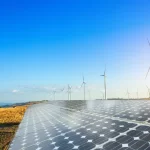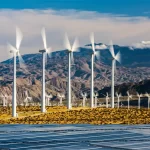Introduction
Central Electricity Regulatory Commission (CERC) has approved the tariffs of NTPC’s 1GW wind-solar hybrid project, a major milestone in India’s renewable energy field. This marks the way towards a more efficient and greener energy mix, combining solar and wind power to provide steady energy production. As the demand for clean energy in India continues to rise, NTPC’s venture is in line with India’s ambitious renewable energy goals and its pledge to cut carbon emissions. The project, which is framed under an agreement on power purchase in India, provides assurance of long-term energy pricing stability to benefit consumers and industry stakeholders alike.
![]()
Background
NTPC Limited is the largest power generation company in India changing the game regarding clean energy transition in the country. As the company continues its massive interest in renewable energy, NTPC has diversified its portfolio to wind, solar and hybrid energy projects. The solar wind hybrid project is a strategic approach to maximize energy generation by leveraging both solar and wind power sources.
This hybrid project (1GW) will be optimizing land and transmission infrastructures and power assuring consistency supply. Intermittent solar energy is compensated by wind power, which offers more effective and predictable energy options. The project is part of a larger mission of NTPC to reach 60 GW of renewable energy capacity by 2032 to meet India National Solar and Wind Hybrid Policy. The green energy tariffs approved for this project will encourage further investments in hybrid renewable solutions, setting a benchmark for future developments in clean energy India.
Tariff Approval Details
CERC’s approval of NTPC’s CERC tariff for the 1GW hybrid power project follows a competitive bidding process. The tariffs set by the commission ensure affordability while maintaining financial viability for developers. The bidding process attracted significant interest from industry players, emphasizing the growing recognition of hybrid solutions in India’s energy landscape.
The approved tariff is expected to enhance the attractiveness of hybrid projects, as it provides a structured pricing mechanism under long-term power purchase agreements in India. This decision will also influence future auctions, setting a reference point for pricing in upcoming hybrid projects. NTPC’s hybrid power project, with its competitive tariff structure, serves as a model for integrating renewable energy sources efficiently.
Impact on India’s Renewable Energy Goals
The approval of tariffs for NTPC’s hybrid project is a significant milestone in the path towards India’s sustainable energy future. Through the integration of solar and wind power, the project improves grid resilience and aligns with the government’s push for increased clean energy uptake. This is in line with the large-scale vision to move away from fossil fuel dependence and reach net-zero carbon emissions by 2070.
In addition, hybrid projects aid in energy security by reducing variability in the generation of renewable power. The use of green energy tariffs makes clean power affordable and competitive to spur industries and consumers towards the uptake of renewable energy solutions. The project also helps solidify India’s pledge towards its National Solar and Wind Hybrid Policy with the aim of promoting hybridization for the efficient use of renewable resources.
Conclusion
CERC’s approval of tariffs for NTPC’s solar wind hybrid project marks a significant milestone in India’s renewable energy landscape. The project represents the prospect of the hybrid solutions in the stable as well as sustainable supply of energy. With a well-structured power purchase agreement in India, competitive green energy tariffs, and strong policy support, the future of hybrid renewable projects looks promising. With India on a pathway to achieve its ambitious clean energy goals and the launch of projects such as the 1GW hybrid power project by NTPC, these projects are becoming important factors towards the development of a greener and more stable energy future.
Frequently Asked Questions (FAQs)
NTPC’s 1GW hybrid power project is a renewable energy initiative that combines solar and wind power to provide a stable and efficient energy supply. The project aligns with India’s clean energy goals and helps optimize energy generation.
CERC approved the tariffs after a competitive bidding process, ensuring affordability and financial viability for stakeholders. The approval provides a structured pricing mechanism under a power purchase agreement in India.
A hybrid project leverages both solar and wind energy, reducing intermittency issues. When solar energy generation declines, wind energy can compensate, ensuring a more stable and reliable power supply.
Green energy tariffs help keep renewable energy affordable and competitive, encouraging industries and households to adopt clean energy solutions. This supports India’s transition to a sustainable energy future.
The project contributes to India’s goal of achieving 60 GW of renewable capacity by 2032 and supports initiatives like the National Solar and Wind Hybrid Policy, which promotes optimal use of renewable resources.












